Monday 31 January 2011
Georgia Atherton- "Why Thrillers Thrive." Homework
The article, 'Why "Thrillers" Thrive,' is about different Thrillers and the difference between Horrors and Thrillers, and why Thrillers are a lot more satisfying.
Thrillers are Thrilling to the audience because they are seeing life reflected, but the kind of life that we will never experience ourselved that consists of emotional disturbances which provide us with the thrills. Our nature is to have these thrills or shake ups, but as we can rarely experience them ourselves we have to experience them artificially, for example in the cinema or a theatre where it has been made for us. In a well made film we not only watch the film, we participate in it in our own way as we appreciate what the characters on stage are going through and we project ourselves into thier conciousness.
A good Thriller, such as 'Hells Angels,' there is no harm to the audience because in our subconcious we are aware that we are safe as we are only visually watching the cinema and know to ourselves that we wont be harmed. For example, when the pilot decides to crash his plane to destroy it, the audience are aware of his inevitable death. This is followed by the viewers seeing his grim face as the plane falls. We almost feel as if we are there with the pilot, also crashing to our deaths, and as his plane crashes, shudders and thrills run through the audience.
However, a bad thriller such as an exhibition show promising thrills to the audience. The audience were sat between two columns facing a curtain. They expected the curtain to rise, however, one of the columns began to fall over toppling on to the audience. It was then suspended above them before it fell completely. This caused the audience fear, not thrills, and therefore there were a lot of complaints about it as the audience's feeling of security was undermined.
A horror is an entirely different type of cinema. It originally means "extreme adversion," and there are a lot of different types of horror, varying from drastic to mild. They were made to provide an emotional jolt to exploit sadism, perversion, bestiality and deformity. Horrors are generally vicious, dangerous and gruesome. Horrors also provide unnatural excitement to the viewers.
"A Thriller must be wholehearted- the more exciting the better and that is why the authentic thriller will live and thrive, and the horror film will die."
Thrillers are Thrilling to the audience because they are seeing life reflected, but the kind of life that we will never experience ourselved that consists of emotional disturbances which provide us with the thrills. Our nature is to have these thrills or shake ups, but as we can rarely experience them ourselves we have to experience them artificially, for example in the cinema or a theatre where it has been made for us. In a well made film we not only watch the film, we participate in it in our own way as we appreciate what the characters on stage are going through and we project ourselves into thier conciousness.
A good Thriller, such as 'Hells Angels,' there is no harm to the audience because in our subconcious we are aware that we are safe as we are only visually watching the cinema and know to ourselves that we wont be harmed. For example, when the pilot decides to crash his plane to destroy it, the audience are aware of his inevitable death. This is followed by the viewers seeing his grim face as the plane falls. We almost feel as if we are there with the pilot, also crashing to our deaths, and as his plane crashes, shudders and thrills run through the audience.
However, a bad thriller such as an exhibition show promising thrills to the audience. The audience were sat between two columns facing a curtain. They expected the curtain to rise, however, one of the columns began to fall over toppling on to the audience. It was then suspended above them before it fell completely. This caused the audience fear, not thrills, and therefore there were a lot of complaints about it as the audience's feeling of security was undermined.
A horror is an entirely different type of cinema. It originally means "extreme adversion," and there are a lot of different types of horror, varying from drastic to mild. They were made to provide an emotional jolt to exploit sadism, perversion, bestiality and deformity. Horrors are generally vicious, dangerous and gruesome. Horrors also provide unnatural excitement to the viewers.
"A Thriller must be wholehearted- the more exciting the better and that is why the authentic thriller will live and thrive, and the horror film will die."
Thursday 27 January 2011
Feedback from Thriller Presentation- Georgia, James, Maya.
- Sound:
We think it will give a better effect than using dramatic non diagetic sounds.
- Location.
- Lighting.
- Test Shots.
Tuesday 25 January 2011
Opening Sequence -
For are thriller opening sequence we have chosen Georgias first idea of the heart beat and the quick shots to the flustered/ panicked man. The man shall be wearing a ripped shirt with fake blood stains and jeans.
The opening sequence will last for few minutes. It will consist of several different shots of a very flustered man in a very confused and stressed state. Whilst a non diagetic sound of a heart beat plays all the way through the opening sequence then slowly shall fade out to the end. The use of this sound and suspense and mystery.
The thriller opening sequence would fit into the sub genre of a mystery thriller, it fits the conventions of a mystery thriller as it is a Suspense film where characters attempt solving, or involved in, a mystery. The thriller conventions uses suspense, tension, and excitement to build the main elements of the opening sequence. More common in mystery thrillers are investigations and the whodunit technique.
Camera work- our opening sequence will use shot types such as; close ups of the mans hands to show him clenching and facial expressions to show his distress and medium to long shots to show him when he wakes up in the bed and the confused state he will be in. The film shall be in a continuity style through out.
Mise en scene- the opening sequence shall be filmed in a dark room with no lighting apart from the single light on the video camera, this adds to the suspense as it creates a feel of the unknown and mystery, which are both typical conventions of a mystery thriller film. Also maybe filming the cuts where the camera cuts to the man in night vision we may also do as its looks scary and mysterious. We will take close up shots of different parts of the mans body before we cut to a long shot of the man tied down on a bed whilst we see his worried and confused reaction to the situation he is faced with.
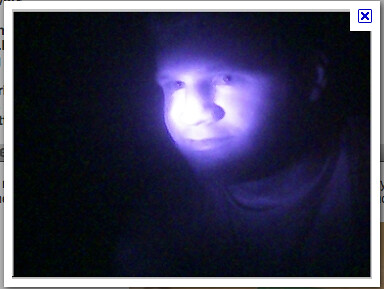
The image above shows the effect of what we may decide to do if we filmed in night vision, but we would have a green filter not purple.
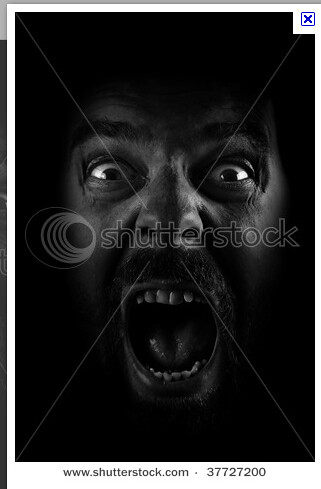
The image above shows the sort of thing which we shall be trying to film when we do close ups of the man in distress.
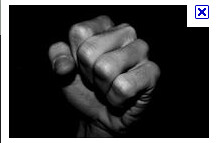
This image is the style of how we want to film the clenching fist but in our shot of this we would have a lot more tension being sown.
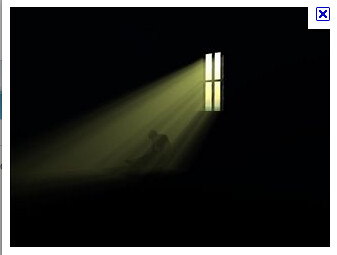
The image above shows the setting which we shall film are opening sequence in but we wont have the window which is letting in a beam of light most likely.
The opening sequence will last for few minutes. It will consist of several different shots of a very flustered man in a very confused and stressed state. Whilst a non diagetic sound of a heart beat plays all the way through the opening sequence then slowly shall fade out to the end. The use of this sound and suspense and mystery.
The thriller opening sequence would fit into the sub genre of a mystery thriller, it fits the conventions of a mystery thriller as it is a Suspense film where characters attempt solving, or involved in, a mystery. The thriller conventions uses suspense, tension, and excitement to build the main elements of the opening sequence. More common in mystery thrillers are investigations and the whodunit technique.
Camera work- our opening sequence will use shot types such as; close ups of the mans hands to show him clenching and facial expressions to show his distress and medium to long shots to show him when he wakes up in the bed and the confused state he will be in. The film shall be in a continuity style through out.
Mise en scene- the opening sequence shall be filmed in a dark room with no lighting apart from the single light on the video camera, this adds to the suspense as it creates a feel of the unknown and mystery, which are both typical conventions of a mystery thriller film. Also maybe filming the cuts where the camera cuts to the man in night vision we may also do as its looks scary and mysterious. We will take close up shots of different parts of the mans body before we cut to a long shot of the man tied down on a bed whilst we see his worried and confused reaction to the situation he is faced with.

The image above shows the effect of what we may decide to do if we filmed in night vision, but we would have a green filter not purple.

The image above shows the sort of thing which we shall be trying to film when we do close ups of the man in distress.

This image is the style of how we want to film the clenching fist but in our shot of this we would have a lot more tension being sown.

The image above shows the setting which we shall film are opening sequence in but we wont have the window which is letting in a beam of light most likely.
Friday 21 January 2011
How sound is used in our opening sequence
The sound in are opening sequence which is a heart beat is used to add to the dramatic effect which builds up tension and realism. The heart beating builds up suspense for the viewers and doesn't reveal much leaving them questioning.
analysis of sound used in thriller opening
Catch Me if You Can Opening Title Sequence- the use of sound within the opening sequence portrays an image of the film and how its mystical and how its on a per suite theme thought the theme, the sound is emphasising the tension which is being built up through the animation sketch of the opening sequence. the music picks up pace to suit the scene of the animated sketch and towards the end the music is very fast in pace.
Pulp fiction opening sequence- The song is "Misirlou" by Dick Dale. The song in the opening sequence shows a good reflection of what the film is like and the way the song changes to another at the end emphasises the away the film is inconsistent and fast past which shows the way it has alot of action and extremism.
Thursday 20 January 2011
Individual Ideas For The Opening Sequence Of Are Thriller Project
My first idea was to have my opening sequence set in a dark room, with a flash light flashing on a person who has been tied onto a chair with fake blood over their face for the effect that they have been beaten up. I shall have the tittle sequence in red writing which shows up when the spot light isn't showing. the cuts between the flash light and black background with the titles showing shall be fast paced to add to the suspense. this meets the typical convention of a thriller opening sequence as creates a scared thrilling feeling to set off the film for the viewers.
My second idea was to have a woman walking through a park and night and have a camera follow her and pop up in different positions through her walk, making creepy diagectic noises so the woman gets scared. this shall add suspense and the viewer will become scared for the woman so this is meeting the typical conventions of a thriller opening sequence. the pace between shots shall be a steady and continuity throughout. this shall have reference to murder mystery .
My second idea was to have a woman walking through a park and night and have a camera follow her and pop up in different positions through her walk, making creepy diagectic noises so the woman gets scared. this shall add suspense and the viewer will become scared for the woman so this is meeting the typical conventions of a thriller opening sequence. the pace between shots shall be a steady and continuity throughout. this shall have reference to murder mystery .
Georgia Atherton- Thriller Opening Sequence Ideas
My first idea is to have a non-diagetic --> diagetic sound of a heart beat with a black background. The titles will be slowly cutting from one to the next slowly getting faster. Then i will add a non-diagetic ticking that gets quicker, and have this over the heartbeat. There will then be a extremely quick shot of a person with thier eyes clenched tight and then cutting back to to a black background with another actor's name or producer etc, then it will carry on like this with different parts of the man's body like his forehead sweating or his fist clenching etc. During this the music will be getting quicker and quicker, finally ending with a cut to the man waking up in bed/ tied up in a room etc really flustered and concerned. Then something happens such as another person comes in and says something (im not sure what this could be yet!) then a dramatic almost eerie drum? sound will cut off with the man shouting/screaming? to a final title credit of "By Georgia Maya and James" or something along those lines. This would be much easier to film than explain as it is hard to explain my vision of it. This thriller opening would be an action/scary thriller.
My second idea is of a woman walking her dog through some woods at night and suddenly her dog runs off into the darkness. The woman is calling for it to come back but all she hears is silence. Then she hears someone breathing behind her. She turns round and no-one is there. Then there is a tracking shot of a handheld camera running towards her face. She screams and the title credits roll with a thrilling non-diagetic sound behind it. This is a murder mystery/ scary thriller.
My second idea is of a woman walking her dog through some woods at night and suddenly her dog runs off into the darkness. The woman is calling for it to come back but all she hears is silence. Then she hears someone breathing behind her. She turns round and no-one is there. Then there is a tracking shot of a handheld camera running towards her face. She screams and the title credits roll with a thrilling non-diagetic sound behind it. This is a murder mystery/ scary thriller.
James Bissell-thriller opening 2
The sequence starts with a couple walking through a park chatting to one another when the man's phone rings, he answers the phone to a women he tells him that she is watching them. The man looks around in fear and then asks who it is. The women then reveals to the man that she knows what he has done and that his girlfriend wouldn't want to know what that is. The man tells her to leave him alone and hangs up the phone. As soon as the man does this his phone rings again with the same number, he quickly hangs up and phones his friends at the police station as the man is in the police force. However before he can put down the phone someone hits the man from behind right on the head, the women screams but is then smothered before the scene is cut to the end credits.
James Bissell-thriller opening
The sequence starts in a pitch black room with just a women's voice being heard as she cries for help. Suddenly the lights come on in the room revealing the girl sat on the floor handcuft to the leg of one of the table legs. All of a sudden a deep mysterious voice is heard from a set of speakers that are in the room telling her the only way out is to find the key to uncuff herself, however if she doesn't find the key within five minutes the lights will go out again and she will be left in the dark to die. The kidnapper also tells also tells the girl that in her right pocket is a key but this key doesn't fit the handcuffs. The girls' five minutes begin and she staggers around the room as far as she can in order to find the key. The cut pace will be much quicker here to enphasise the tension in this scene. Eventually the girl finds the key under a table with ten seconds to spare before releasing the cuffs. The mysterious voice then comes over the speakers again telling the girl that the door to the room may not be as harmless as it looks and that the key in her pocket will open the door but whether she chooses to do so is up to her.....
Tuesday 18 January 2011
Previous Student's Thriller Video Analysis
Mise-en-scene: Most of the footage is filmed on a bus. The first scene is a panning shot of a bus station and then quickly cuts to inside the bus focusing on the boy sitting in the corner. At the end of the sequel there is a long shot of the bus stopping in the middle of a town and you see everyone getting off the bus. The boys body language throughout the opening sequence is very closed and doesn't show much emotion.
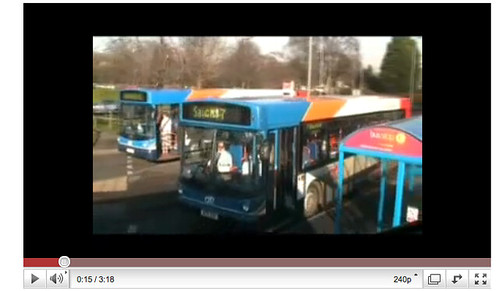
Lighting: Most of the light in the sequel is provided by natural light although it seems there could be some artificial light on the bus.
Sound: Most of the sound comes from the soundtrack that covers most of the footage. At the end of the footage when the bus stops in town it is replaced by more natural sound.
Editing: Throughout the footage the cut pace is kept very slow and it cuts mostly to different angles of the boy.
There are a lot of close up shots of the boy to express his expressions throughout the journey. there are many other different shots types which are appropriate to the relevant distance which is needed to show the detail n the shot, this would be a level three in the grading criteria.

This screen grab shows the panning shot which is used at the beginning for the establishing show when the bus leaves the bus bays and has a panning shot of the other buses coming in.
The screen grab above shows the boys face with a close up shot, which shows how the boy doesn't show much emotion.
Titles are used appropriatly and used at the relevant points during the opening sequence.
Marking Criteria
Marking Criteria
Level 3:
There is evidence of proficiency in the creative use of many of the following technical skills:
Thee is evidence of excellence n the creative use of most of the following technical skills:
Level 3:
There is evidence of proficiency in the creative use of many of the following technical skills:
- holding a shot steady, where appropriate,
- framing a shot, including and excluding elements as appropriate.,
- using a variety of shot distance as appropriate,
- shooting material appropriate to the task set,
- selecting mise-en-scene including colour, figure, lighting, objects and setting,
- editing so that meaning is apparent to the viewer,
- using varied shot transitions and other effects selectively ad appropriately for the task set,
- using sound with images and editing appropriately for the task set,
- using titles appropriately.
Thee is evidence of excellence n the creative use of most of the following technical skills:
- holding a shot steady, where appropriate,
- framing a shot, including and excluding elements as appropriate.,
- using a variety of shot distance as appropriate,
- shooting material appropriate to the task set,
- selecting mise-en-scene including colour, figure, lighting, objects and setting,
- editing so that meaning is apparent to the viewer,
- using varied shot transitions and other effects selectively ad appropriately for the task set,
- using sound with images and editing appropriately for the task set,
- using titles appropriately.
Thursday 13 January 2011
Psychological Thrillers
central theme of identity- examples of how this theme is explored include mistaken identity, amnesia, stolen identities, dual identities.
memories is another key thing. the torture of an individual of bad of traumatic memories. The trauma of a lost memory.
reality + perception- A persons perception of what is and isn't real is also explored.- events are shown from the view point of multiple characters.
Memento (2000)
stream of consciousness- voice over- internal thought.
dramatic + mysterious music- building up suspense- string instruments.
mise en scene- writing on his hand- cant remember things so he uses his body as a note book. he tattoos his body with important info.
set on intrigues- the writing on his body are clues to a bigger puzzle.
cuts + bruises on the protagonists face indicates he has been fighting. he is a vunerable character + his weakness of having no memory makes him more so. it could make him dangerous.
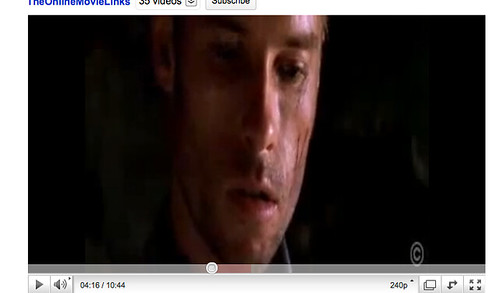
the use of point of view shots in the hotel room tells the viewer he is unsure of where he is. This could indicate he could be unsure of who he is.
close ups of photograph have a voyeuristic feel- the viewer has a privileged perspective.
sense of time is being destrupted by showing the event backwards.
the opening sequence signals to the viewer what to expect in the rest of the film- distortion in reality, disruption of time, repetition + loss of memory.
questions- unreliable narrator.
mistaken identities- "Lenny "- "i have told you before it is Leonard" - dual identity.
memories is another key thing. the torture of an individual of bad of traumatic memories. The trauma of a lost memory.
reality + perception- A persons perception of what is and isn't real is also explored.- events are shown from the view point of multiple characters.
Memento (2000)
stream of consciousness- voice over- internal thought.
dramatic + mysterious music- building up suspense- string instruments.
mise en scene- writing on his hand- cant remember things so he uses his body as a note book. he tattoos his body with important info.
set on intrigues- the writing on his body are clues to a bigger puzzle.
cuts + bruises on the protagonists face indicates he has been fighting. he is a vunerable character + his weakness of having no memory makes him more so. it could make him dangerous.

the use of point of view shots in the hotel room tells the viewer he is unsure of where he is. This could indicate he could be unsure of who he is.
close ups of photograph have a voyeuristic feel- the viewer has a privileged perspective.
sense of time is being destrupted by showing the event backwards.
the opening sequence signals to the viewer what to expect in the rest of the film- distortion in reality, disruption of time, repetition + loss of memory.
questions- unreliable narrator.
mistaken identities- "Lenny "- "i have told you before it is Leonard" - dual identity.
Tuesday 11 January 2011
Previous Student's Thriller Video Analysis
Throughout this clip, fades are used as the main editing style. It really works and capivates your attention. The pace between shots is slow through most of it when it is fading between settings and positions of the girl, but then it is fast when the girl is in shot and moves backwards away from the camera which has been very cleverly edited in final cut. The settings range from being outside where the girl is on a swing, to an empty mysterious room which has an unfriendly presence about it. The way the camera is positioned on the floor gives the impression it has been abandoned, like the house and the girl.
The sound used is only ever diegetic sound which is very eerie and mysterious.

Friday 7 January 2011
Alfred Hitchcock- Marnie Opening Sequence Analysis
Sound: from the beginning there is non-diegetic sound that builds suspense and tension which is over a title sequence which is in the format of a book. The music then suddenly stops to a tracking close up shot of a woman's hand bag as shes walking, you do not see her face but there is a diegetic sound of her shoes .
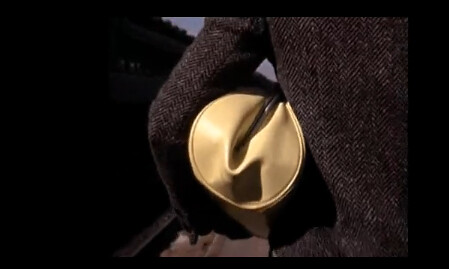
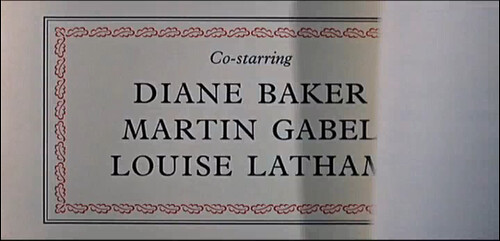
Camerawork: Close ups and panning shots are mostly used in the opening sequence to give the extra feeling of suspense and mystery. When it cuts to the scene of the investigator after the theft you feel as if you are in the room with them which gives extra feeling of realism to the film. In the actual opening sequence the woman who we discover is the thief her face is never revealed. This gives an extra sense of suspicion. There are a lot of cuts in the opening sequence which goes from completely different scene to scene but they are also connected through the storyline.

Mise-en-Scene: The costumes used are very typical of the era the film was set in which is very formal and made up. The location is in early America, in a middle class area, however the costume portrays a much higher class of people. There is natural lighting throughout with a slight dim-ness to the scene with the police investigators. The body language of the police investigators is at first very strong and bold but when the man who got robbed confronts them about why they are laughing when he describes the thief then hunch over slightly to show a very subtle sense of cowardliness.

The woman walking after the title sequence is very calm, strong and seemingly powerful and she walks with meaning and sophistication and her head held high- clearly smitten with the fact she had just stolen the money.
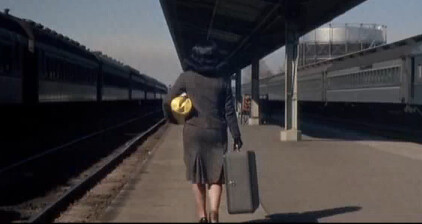
Editing:Through the opening sequence there is continuity editing. The pace between shots is fast,but not within every cut, just a few during the investigation and then the suspense has been built up, which shows and reflects the pace of the woman and hows shes constantly on the move.
there are lots of cuts within this opening sequence. On the title sequence it starts off with a fade and each transition is made with a wipe. In the interview with the detectives there is a shot reverse shot between the detectives and the man.


Camerawork: Close ups and panning shots are mostly used in the opening sequence to give the extra feeling of suspense and mystery. When it cuts to the scene of the investigator after the theft you feel as if you are in the room with them which gives extra feeling of realism to the film. In the actual opening sequence the woman who we discover is the thief her face is never revealed. This gives an extra sense of suspicion. There are a lot of cuts in the opening sequence which goes from completely different scene to scene but they are also connected through the storyline.

Mise-en-Scene: The costumes used are very typical of the era the film was set in which is very formal and made up. The location is in early America, in a middle class area, however the costume portrays a much higher class of people. There is natural lighting throughout with a slight dim-ness to the scene with the police investigators. The body language of the police investigators is at first very strong and bold but when the man who got robbed confronts them about why they are laughing when he describes the thief then hunch over slightly to show a very subtle sense of cowardliness.

The woman walking after the title sequence is very calm, strong and seemingly powerful and she walks with meaning and sophistication and her head held high- clearly smitten with the fact she had just stolen the money.

Editing:Through the opening sequence there is continuity editing. The pace between shots is fast,but not within every cut, just a few during the investigation and then the suspense has been built up, which shows and reflects the pace of the woman and hows shes constantly on the move.
there are lots of cuts within this opening sequence. On the title sequence it starts off with a fade and each transition is made with a wipe. In the interview with the detectives there is a shot reverse shot between the detectives and the man.
Thursday 6 January 2011
Georgia Maya James Preliminary Task
This is our second attempt at the preliminary task which we feel we completed well by including all the camerawork theat was required and the objectives that were set.
Subscribe to:
Posts (Atom)